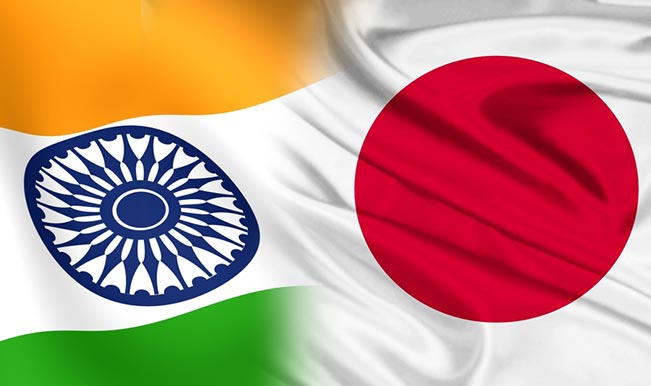China’s One Belt One Road initiative is akin to re-defining geography. The new Silk Road wraps itself around the entire planet. Throughout US President Barack Obama’s two terms in the White House, the superpower consistently retracted its global footprint. Around the same time, China’s economic might surpassed America’s. The OBOR initiative spelled out what the rise of the dragon may mean to the world. Washington refuses to admit a decline in its power projection.
Instead of competing against China, its largest trading partner, on the economic front, it opted for a Cold War-era style policy of encirclement. Japan and South Korea have been allied to America since WWII, while India and Vietnam are its emerging partners. While India’s relations with Vietnam are marked by the sale of the BrahMos cruise missile, the conflict on the economic front still remains. Japan and India have consistently cozied up to each other over the past decade and a half. The prime upshot of the Pivot to Asia policy of the Obama administration has been multifaceted cooperation between India and Japan.
The Indo-Japan relationship has become friendlier due to their shared apprehensions of Donald J Trump’s policies. The duo is dismayed that Washington has not shown hostility towards Beijing as had been spelled out on the campaign trail. Tokyo and Delhi, like other China-weary capitals, deem Washington’s exit from the Trans-Pacific Partnership as a setback. Japan’s Shinzo Abe has been gradually strengthening his political power with the resolve to rewrite the country’s constitution. Trump’s errant statement regarding defense of Japan and South Korea helped fuel patriotic sentiments in both the neighbors. Abe’s moves away from self-defense pledge have gradually borne fruit. The new legislature may add more power to Japan’s military muscle.
India, on the other hand, has been keen to benefit from Japan’s mettle in sophisticated technologies including the realm of military. Though Modi’s Made-in-India is far from hyped expectations, it has lured many countries with sophisticated technological base. For starters, Delhi is working at acquiring 8 ShinMaywa US-2, primarily designed for air-sea rescue missions, besides seeking under-license production.
The relations in historical perspective
Though some of India’s freedom movement activists escaped to imperialist Japan, formal diplomatic relations could not be established till 1952. Prime Minister Nobusuke Kishi became the first Japanese dignitary to visit India in 1957. A year later India was receiving Japanese loans. During the succeeding years the initial warmth withered away due to the Cold War whereby Japan became the lynchpin of America’s containment policy in the Pacific while India was heavily inclined towards the Kremlin.
The relations briefly nose-dived in 1998 as India’s Prime Minister Atal Bihari Vajpayee ordered nuclear tests in Rajasthan, triggering Pakistan to follow suit a fortnight later. Typically, Tokyo demanded Delhi and Islamabad to sign the Comprehensive Test Ban Treaty (CTBT). Neither obliged. Yet, Japan’s Premier Yoshiro Mori visited India two years later to commit to the establishment of a ‘global partnership between Japan and India.’ The yearly bilateral visits and cooperation framework had so firmly cemented the relations by 2008 that both issued a declaration on security cooperation, leading to further institutionalization of ministerial level engagement.
Narendra Modi’s Tokyo visit of 2014 heralded the two countries upgrading the relations to “Special Strategic and Global Partnership”, resulting in the “transformation of the Japan-India Special Strategic and Global Partnership into a deep, broad-based and action-oriented partnership.” Japan participated in US-India naval exercises conducted in Malabar in 2014. The military-to-military bond has gone from strength from strength in recent history, with Japan sending its helicopter carrier JS Izumo in July to join US super carrier USS Nimitz and India’s aircraft carrier INS Vikramaditya for the latest edition of the Malabar war-games in the Bay of Bengal. The navies practiced detection and destruction of the enemy submarines.
Both Asian powers have, however, signed two defense framework pacts: one concerning the transfer of defence equipment and technology, and the other pertaining to security measures for the protection of classified military information. Though the Asian tiger views India as a strategic partner with agreements for cooperation in research and development of defence equipment was reached in 2015, it has been reluctant in selling military hardware.
The ties became more explicitly aimed at containing China when Modi visited Toko in 2016. In view of the rising tensions in the South China Sea, the two nations agreed to coordinate the Free and Open India and Pacific Strategy and the Act East policy.
After six years of deliberation, India and Japan signed a landmark civil nuclear energy agreement in Tokyo in 2016. While allowing Japan to export nuclear power equipment and technology to India, the deal’s ‘nullification clause’ can be invoked if Delhi conducts a nuclear test. Signing of such an agreement after the Fukushima Nuclear Power Plant disaster in 2011 also signified the depth of bilateral relations. Moreover, India remains the sole non-NPT nuclear power to sign such a transfer of technology agreement with Japan.
The way forward
Since 2014, the two leaders’ alternative visits have had a monumental impact on relations. ‘Japan and India Vision 2025’ spells a new era in their special strategic partnership. A deepening bond with India serves Shinzo Abe’s ambition of a more assertive Japan.
Abe’s recent visit to Ahmadabad, Gujrat, was a true expression of his fondness for ties with India. Dressed in silk kurta and pajama, he was driven in an open jeep from the airport where Modi personally came to welcome him. Hundreds of people lined up in the streets. The two-day sojourn was marked by populist symbolism as well as solid progress during closed-door meetings.
Both sides signed ‘open skies’ agreement and laid the foundations of ‘Act East Forum’, signifying Japan’s involvement in India’s China-bordering volatile North Eastern states. The Modi fan was overjoyed by the signing of the Mumbai-to-Ahmedabad bullet train project.
India seemingly exploited the Doklam standoff to its best advantage. The two nations may eventually have joint army-to-army exercises as deliberations began on the subject a few years ago.
As much as India has been keen on acquiring Japanese US-2 aircraft and Soryu-class, the latter is moving ahead cautiously due to concerns of domestic political backlash, while adopting a one-step-at-a-time policy. Thus, Abe’s Gujrat visit did not make headlines for the sale of military hardware. Japan’s military actions are limited by legally binding restrictions in its pacifist Constitution. Thus, the forthcoming elections in the country hold the key. If Abe makes the expected gains, the Land of the Rising Sun may once again transform into a regional military power too.
The strengthening Indo-Japan alliance has wider regional and global implications. Tokyo’s evolving military posture is no longer defensive, but has become effectively confrontational. When it partners with India alarm bells ring not only in China but also in Pakistan. Delhi’s acquisition of Japanese military technology adds the pacifist Asian giant to the list of countries fiddling with the balance of power between nuclear-armed countries.
(The article is first in a two-part series on dynamics of Indo-Japan partnership. The next part will deliberate on implication of India-Japan ties for Pakistan, China and Russia.)














